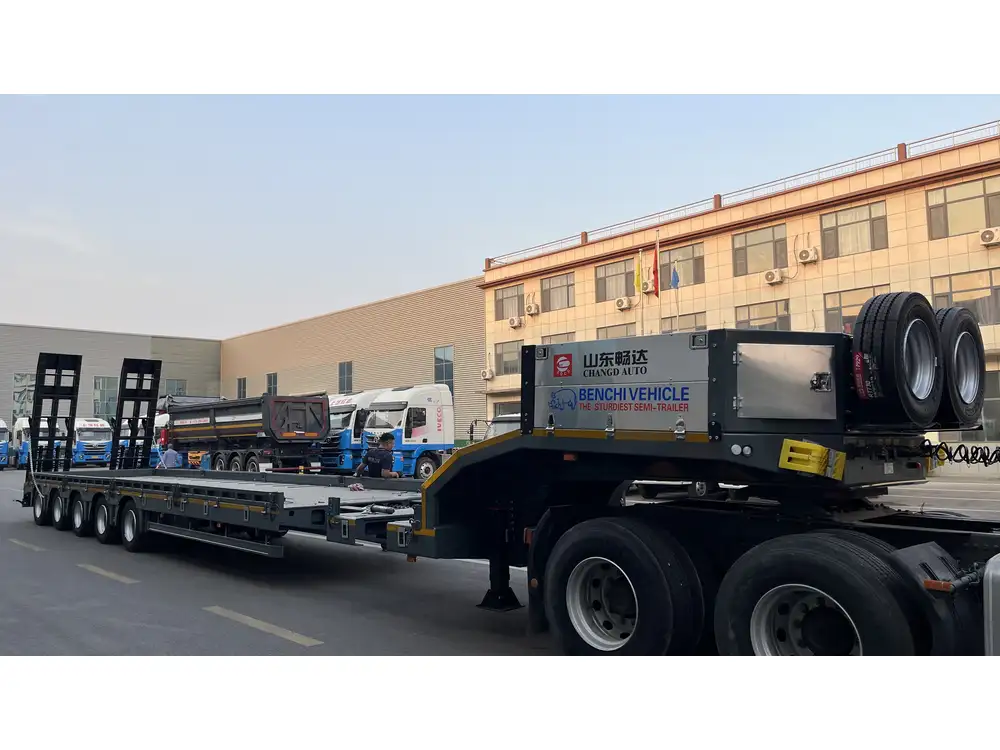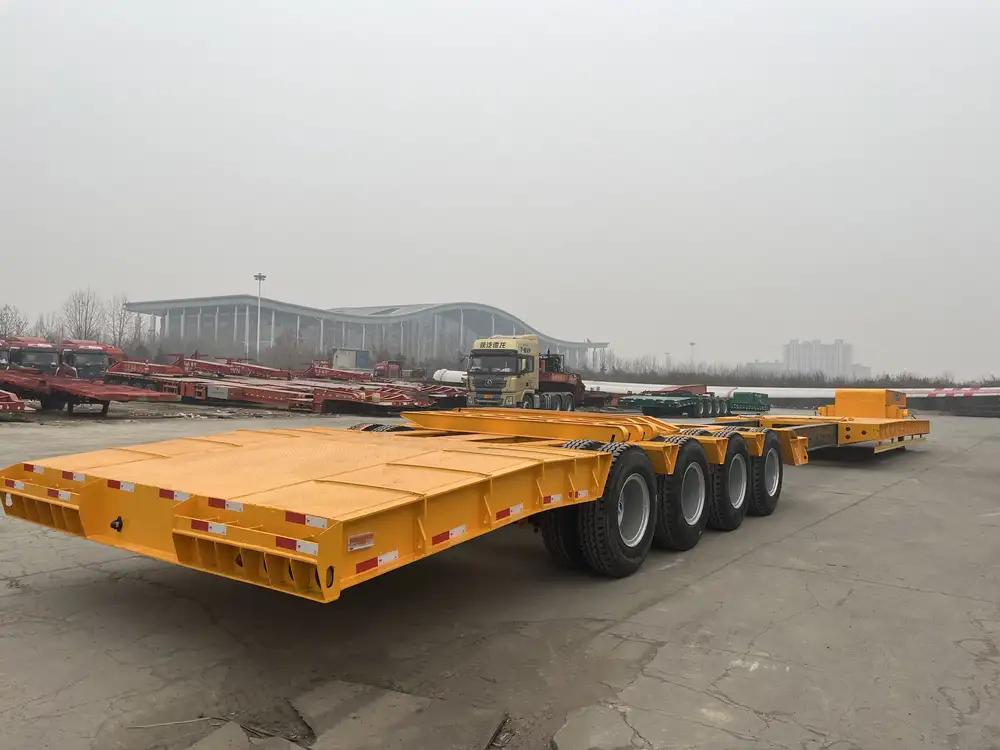When it comes to semi truck trailers, knowing their dimensions is crucial not only for manufacturers but also for logistics companies and truck drivers alike. In this detailed article, we will delve into the various lengths of semi truck trailers, their classifications, and potential applications. The objective is to provide readers with a well-informed understanding of the industry standards and practices, ensuring optimal decisions when it comes to transportation needs.
Understanding the Basics: What is a Semi Truck Trailer?
A semi truck trailer, often referred to simply as a trailer, is a non-motorized vehicle that’s towed by a semi truck. These trailers are essential in transporting goods across vast distances, offering a versatile solution to both local and long-haul logistics challenges.
Common Types of Semi Truck Trailers
Before we dive into the specifics of their lengths, let’s explore the common types of semi truck trailers, as each type has different standard sizes:
| Trailer Type | Description |
|---|---|
| Dry Van Trailers | Enclosed trailers for transporting non-perishable goods. |
| Reefer Trailers | Refrigerated trailers for temperature-sensitive cargo. |
| Flatbed Trailers | Open trailers designed for heavy and oversized loads. |
| Tanker Trailers | Specialized for transporting liquids or gases. |
| Car Hauler Trailers | Designed to transport vehicles. |

Standard Lengths of Semi Truck Trailers
The lengths of semi truck trailers can vary, but they generally fall within specific classifications established by the Federal Motor Carrier Safety Administration (FMCSA). Here is a comprehensive look at these standard lengths:
1. Standard Dry Van Trailers
Typically used for transporting dry goods and non-perishable items, dry van trailers are available in a few common lengths:
- 28 feet – Commonly used for shorter distance hauls and less storage capacity.
- 48 feet – This is a prevalent length across the industry, striking a balance between capacity and maneuverability.
- 53 feet – Ideal for longer hauls, maximizing cargo space, often used for full truckload shipments.
2. Reefer Trailers
Reefer trailers, or refrigerated trailers, are indispensable in the transport of food and pharmaceuticals:
- 53 feet – Similar to dry vans, providing ample storage for perishable items.
- 48 feet – Offers slightly less capacity, typically used for regional distribution.

3. Flatbed Trailers
Flexibility in loading and unloading makes flatbed trailers popular for a wide range of applications:
- 48 feet – A standard length often used for medium-sized loads.
- 53 feet – Commonly used for oversized and heavier loads that require additional space.
4. Tanker Trailers
Tanker trailers come in different lengths based on the liquids they carry:
- 40 feet – Often used for bulk liquid transport.
- 48 feet – A standard size that balances regulatory requirements and volume needs.
Legal Considerations for Trailer Lengths

Federal Regulations
The U.S. Department of Transportation sets forth regulations that govern the maximum allowable lengths for semi truck trailers:
- For Combined Lengths: The maximum combined length of tractor and trailer combination is generally limited to 65 feet. Some states allow combinations up to 75 feet, contingent upon local laws.
- For Non-Interstate Travel: Special provisions may be made for certain trailers on non-interstate highways.
State Regulations
Individual states may have their own specific regulations and exceptions concerning trailer lengths and overall vehicle dimensions. It’s crucial to verify local laws, as violations can lead to significant fines and logistical issues.
Variations in Semi Truck Trailer Lengths

International Standards
Length specifications can differ drastically in other regions, such as Europe or Asia. For instance, European standards allow for longer overall vehicle lengths, often up to 18.75 meters (about 61.6 feet) for the entire vehicle:
- EU’s Standard Length: Up to 16.5 meters (54.1 feet) for semi trailers specifically.
- Heavy Cargo Regulations: Some jurisdictions permit specialized trailers designed for heavy cargo, which may vary significantly in length.
Custom and Specialized Trailers
In certain industries, customized trailers may deviate from standard lengths. For example, construction and agricultural sectors often require trailers tailored to their unique needs, which can range beyond the conventional sizes discussed.
Practical Applications of Different Trailer Lengths
Understanding the implications of trailer lengths can significantly influence logistics decisions. Here are some practical applications:

Choosing the Right Trailer Length for Your Business Needs
- Freight Type: Determine what types of goods you will be transporting (e.g., perishables vs. heavy machinery) to select the most suitable trailer length.
- Route Considerations: Evaluate routes for potential restrictions on trailer lengths and ensure compliance with local regulations.
- Cost-Efficiency: Longer trailers can increase load capacity, potentially reducing transportation costs per unit.
Case Studies: Successful Implementation of Trailer Lengths
Food Transport Company:
- Trailer Used: 53-foot reefer trailers
- Impact: Increased cargo space enabled the company to optimize routes, minimizing fuel consumption and delivery times.
Construction Firm:
- Trailer Used: 40-foot flatbed trailers
- Impact: The choice of flatbed trailers allowed for easy loading and unloading of oversized materials, improving project timelines.
FAQs: Answering Common Queries About Semi Truck Trailer Lengths

Q1: How long is a typical semi truck trailer?
A: A typical semi truck trailer length ranges from 28 feet to 53 feet depending on the type and purpose of the trailer.
Q2: Are there restrictions on semi trailer lengths?
A: Yes, while the federal maximum combined length is generally 65 feet, states have varying regulations that must be adhered to.
Q3: What is the longest semi trailer allowed?
A: The longest standard semi trailer is typically 53 feet. However, some jurisdictions may allow specialized longer trailers under certain circumstances.

Q4: Why choose a longer trailer?
A: Longer trailers allow for more cargo capacity, which can lead to reduced transportation costs per unit and increased efficiency for full truckload shipments.
Conclusion: Making Informed Decisions on Semi Truck Trailer Lengths
In the ever-evolving logistics landscape, understanding the dimensions and regulations surrounding semi truck trailers can ultimately determine the success of transportation operations. Whether one is involved in manufacturing, distributing, or hauling goods, selecting the appropriate trailer length not only ensures compliance with state and federal laws but also facilitates operational efficiency.
In summary, whether it’s choosing a 28-foot trailer for smaller hauls or a 53-foot reefer for perishable goods, the right decision can lead to better service delivery and lower operational costs. Thus, we encourage all stakeholders in the supply chain to stay informed about trailer specifications and adhere to current regulations to optimize their transportation practices effectively.



